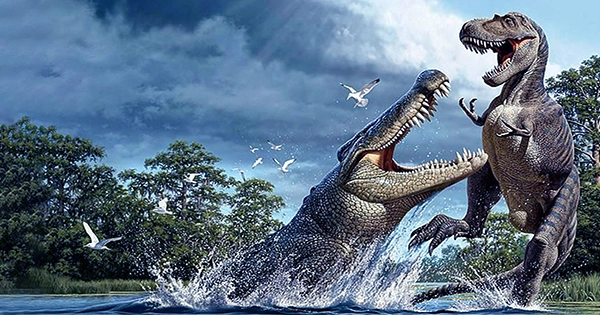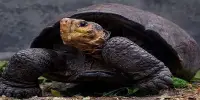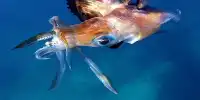A newly devoured dinosaur has been discovered in the stomach of a Cretaceous crocodile. This wasn’t quite the epic dinner-time brawl we might expect – the crocodile wasn’t particularly enormous, even by current standards, and the dinosaur was only around the size of a chicken. Despite this, it confirms what palaeontologists have long assumed, as well as the discovery of a new crocodile species and genus. A group of paleontologists and volunteers were excavating sauropod bones in Winton, Queensland, Australia, in 2011. The specimen turned out to be “not a very good one,” according to Dr. Matt White of the University of New England.
Despite this, after extracting everything they could using picks and shovels, the team hired a front-end loader to scrape the site’s various layers of dirt. After failing to dig down a meter, the team was going to send the loader somewhere when they decided to go one level deeper. On the good side, they came across a concretion that contained a 93 million-year-old fossil crocodile that would have otherwise remained unknown beneath the sheep station. Instead, Gondwana Research has described the unexpected – for many reasons – find. Unfortunately, the machine caused significant damage to the fossil as a result of its operation — heavy machinery is not the greatest approach to treat fossils.
When White and others were alerted to the crocodile’s presence, they dug it up with more modern equipment and discovered something remarkable: an extraordinarily complete crocodile skeleton with a little ornithopod dinosaur in its belly. “When you damage something, you make the best discoveries,” White told IFLScience. These are words to live by. Although the ornithopod is too damaged to be identified, White told IFLScience that it could be the same species that created the famed Lark Quarry trackway. The crocodile belongs to the genus Confractosuchus sauroktonos, which means “broken dinosaur killer.”
Small- to medium-sized dinosaurs were estimated to have made up a substantial part of at least some species’ diet throughout the Jurassic and Cretaceous periods, and modern crocodiles are famous for eating anything. Only two prehistoric crocodile ancestors’ stomach contents have been discovered, one of which was impossible to identify and included a smaller crocodylomorph. White told IFLScience that the two fossils were too entwined for one of their bones to be removed without causing damage to the other. Instead, the team created 3D models of each bone using micro-CT scanners.
They were able to confirm that the ornithopod was the crocodile’s last meal because one femur had been shattered in half by a powerful bite, while the other had the distinct imprint of a crocodile tooth. The crocodile was around 2.5 meters (8 feet) long, which was modest by Cretaceous standards, and the ornithopod weighed about 1-1.7 kilos (2-4 pounds). Based on the status of its vertebrate, White categorized the crocodile as a “subadult” to IFLScience, but did not believe it would have grown much further.
It’s unclear why the crocodile perished so soon after eating a nice treat. White pointed out that the tail has yet to be discovered, adding, “That’s the tastiest part of a crocodile,” suggesting that a larger dinosaur may have avenged its smaller companion. “While Confractosuchus would not have specialized in eating dinosaurs, it would not have passed up an easy meal, such as the immature ornithopod remains found in its stomach,” White explained to IFLScience.















